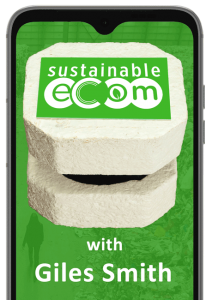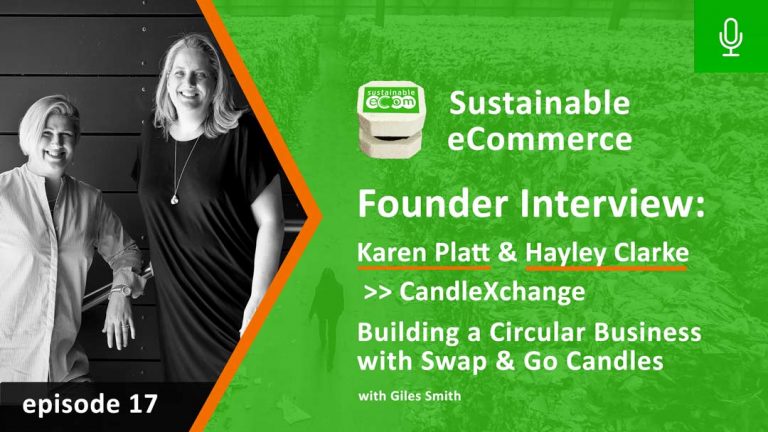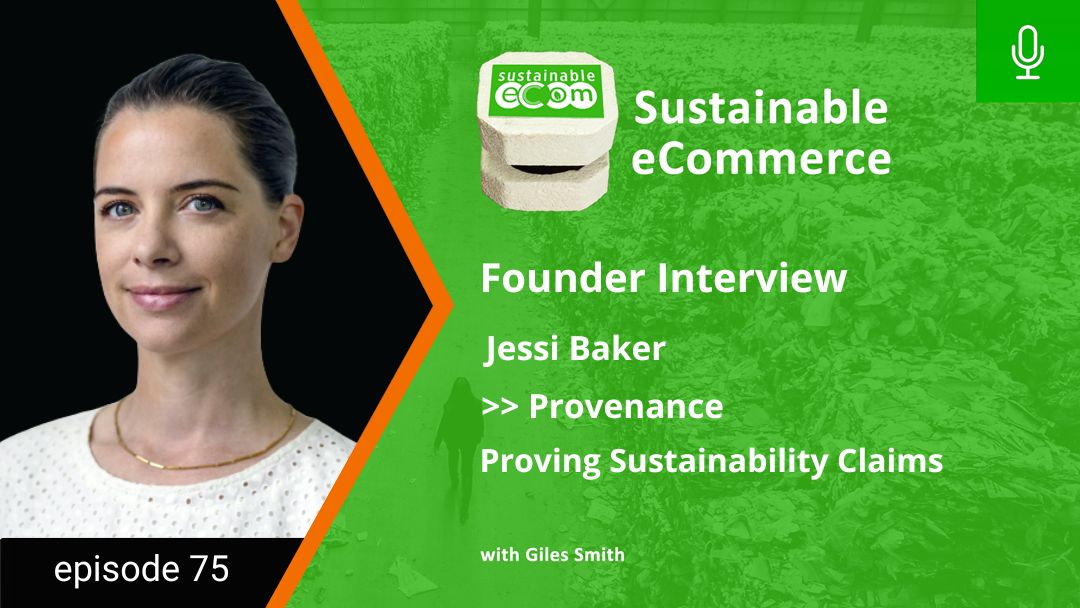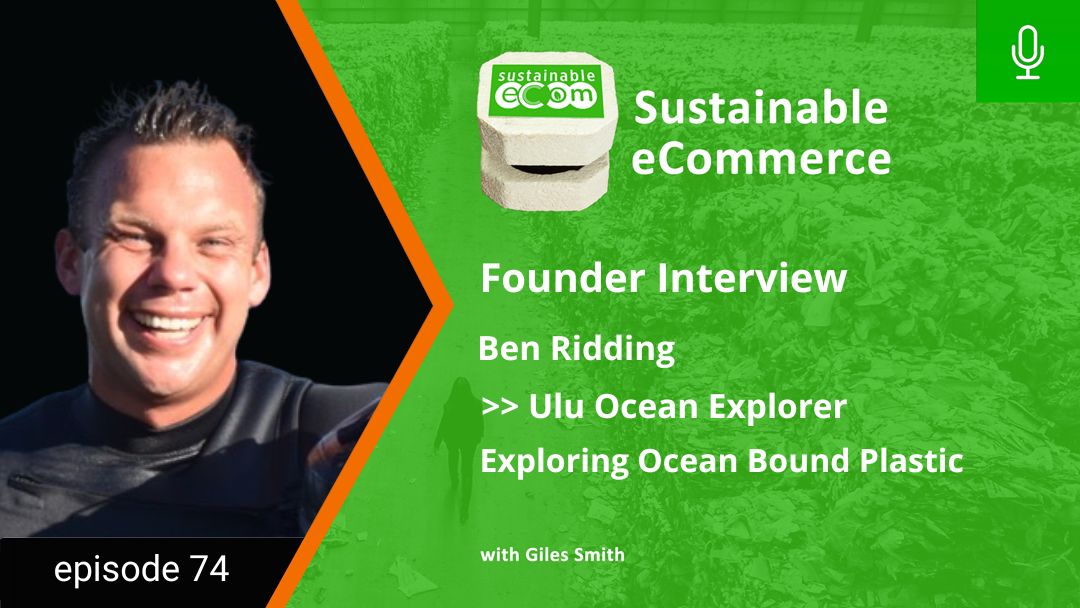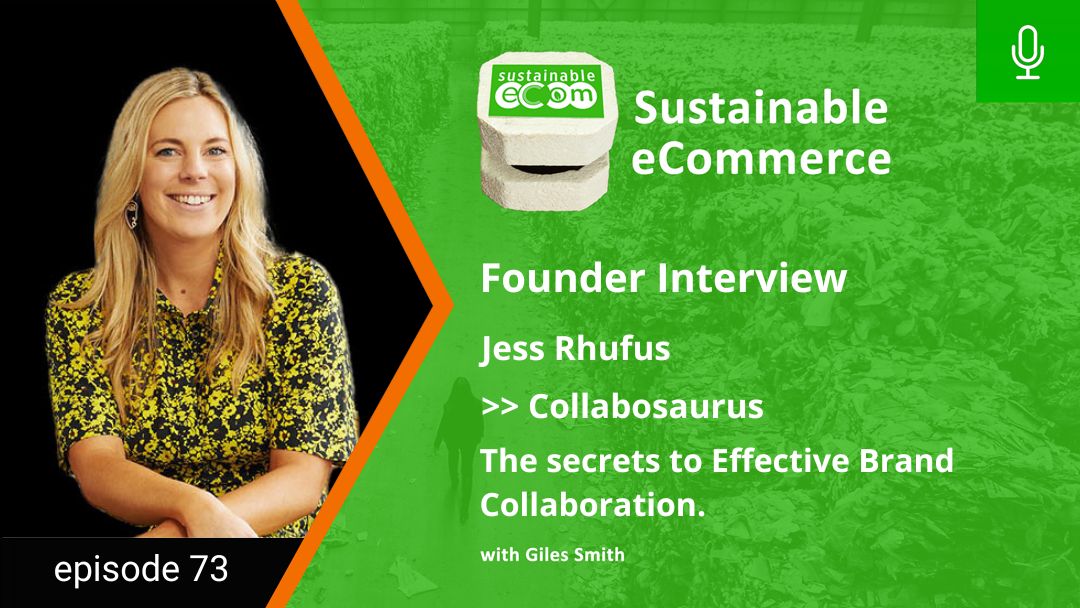Welcome to Episode 17 of the Sustainable Ecommerce Podcast!
Today, I’m joined by the dynamic duo of Hayley Clarke and Karen Platt. Together they are serial sustainable brand entrepreneurs having started up female Fashion Label One P Designs and more recently the CandleXchange.
We spend a little time chatting about One P, but the reason I asked them to come on the show is that they are right now developing a circular business model based around Swap & Go Candles.
There is no doubt that recycling has its issues and so figuring out the reverse logistics to enable a circular business model is a potentially critical strategy for sustainability as well as being a very smart move for encouraging returning customers.
I hope you find this as fascinating a discussion as I did!
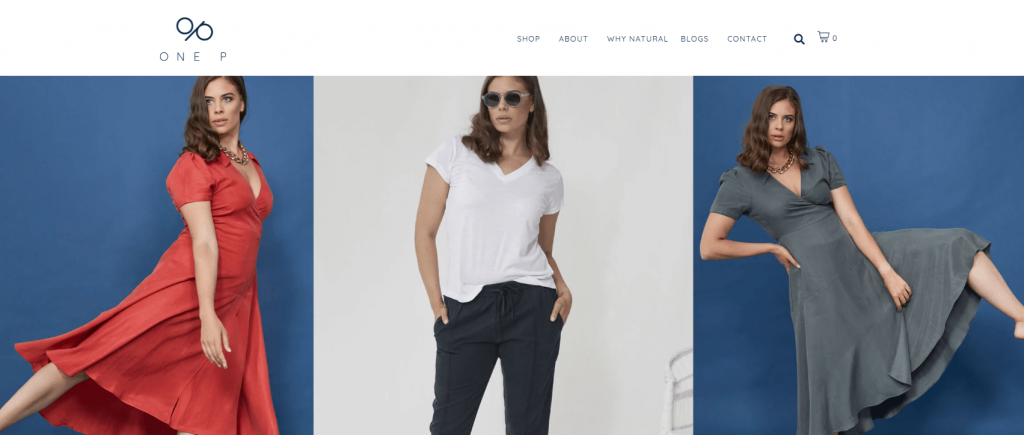
Giles Smith: Haley and Karen, welcome to the show!
Hayley Clarke: Thanks for having us!
Karen Platt: Thanks Giles!
Giles Smith: Thank you very much for joining me. We have so much to discuss because as I said you guys are serial entrepreneurs in the sustainability space. We want to unpack both of those two journeys, but before we do, perhaps you could tell us a little bit about yourselves?
Karen Platt: Thanks, Giles. Just a little high level background. Hayley and I had the opportunity to work together in marketing and customer experience in Optus, probably about eight or 10 years ago now. So we've got quite a lengthy corporate background in everything from product management, product development, marketing, customer experience & operations.
We were probably a little bit disillusioned with working within a big engine and wanted to do something a little bit different. About five years ago just after I'd had my little girl, Hayley approached me and asked me if I was interested in working with her.
I think the, the interesting thing for working in a co-founding environment is that we had a working relationship and we knew that we're very complimentary. Haley's definitely very visionary, She's got some great big ideas. She's very financially, grounded with some experience across some boards as well. So we go hand in hand.
Hayley Clarke: I started at IBM when I was 19 years old. So, I was there for just over 13 years. I think at a young age, I really got exposed to innovation, fast pace, you know, nothing staying the same. I came from a family of entrepreneurs, so I think it was only a matter of time before I swapped over to the other side.
I was traditionally in marketing, so I spent a lot of time with women because marketing is over 80% women. This issue of what to wear to work just kept coming up over and over again. Then I saw this concept of creating a uniform that you could wear to work so that you didn't have to do all this thinking in the morning with all the other thinking that you had to do before you even walked through the office doors.
So, the dream sort of came about, setting up a clothing range that was sustainable, based on natural fibers and made locally. You could get rid of the cheap synthetic that made you really uncomfortable didn't last long, and really smelt by the end of the day.
And that's where One P was created. I went off and did a fashion degree because I wanted to learn the technical aspects of it. And so our journey began!
Giles Smith: That's an amazing transformation from IBM through to Optus and then into the fashion industry. And I think that right there just goes to prove that when you have a passion to do something, it doesn't really matter where you've come from because everyone has a set of skills that they can redeploy somewhere.
Looking at the One P Design website, you’ve obviously chosen a whole bunch of interesting fabrics including organic cotton, silk, you've got, Tencel. How did you go about finding factories that would work with specifically those sustainable materials?
Hayley Clarke: Well, it's interesting that you say that because it really took me months to be able to find a manufacturer. Um, as you're starting out as a new designer, the minimum order quantities to be able to get done in Australia and even offshore are just so high.
So I was really lucky to come across a factory in Chippendale. We negotiated on minimum order quantities. She was very excited about working with natural fibres, because anyone in the textiles industry that's passionate about it loves working with natural fibres.
Giles Smith: Tell us a little bit more about One P, was it an entirely eCommerce brand? Was it, was it a retail store? Was it a bricks and clicks?
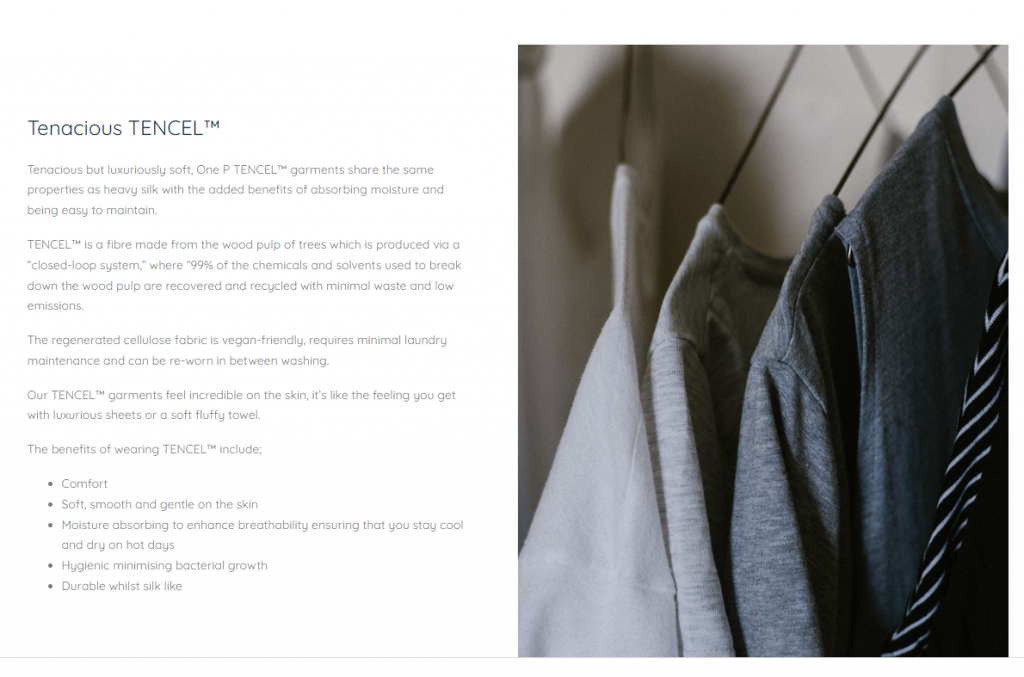
Hayley Clarke: It started off as an e-commerce brand. Then we started to do some wholesaling. However, that's when we started to really see some challenges because the textiles and clothing industry is quite old school & clunky. It has extremely complex supply chains that are very, very hard to change. And it requires a lot of capital to be able to re-engineer those supply chains. And so for us to be direct to consumer was great. We could meet the margins direct to consumer, but as we look to start to wholesale, the prices of our products would have to be significantly increased, which we just didn't feel comfortable with charging onto the consumer.
I found with textiles and clothing, it's an industry where you're incentivised to actually not behave in the right way. To succeed, you have to offshore. To succeed, you have to use synthetic cheap fibres. To succeed, you have to be in fast fashion with lots of waste.
Giles Smith: I hear a lot of people bemoaning that exact same thing when it comes down to wholesaling in particular. So let's focus from a moment on the retail aspect. How was it managing both a physical store as well as an online store?
Hayley Clarke: We went completely against the grain. We started up our first pop-up store at my local mall during the first COVD lockdown.
Giles Smith: From an eCommerce perspective, it can be very arms reach and difficult to really get to know customers. I'm interested to see from your perspective, what people are saying. Have you seen a trend towards circularity in clothing, retail? Have you seen that demand come through from customers?
Hayley Clarke: I've definitely seen it. eCommerce was really hard for us, because our value resides in the quality of the fabrics. So to be able to have customers come in, tangibly feel the quality of the fabrics, that was a game changer for us.
One of the key things that happened over COVID that we still continue to see is the desire for Australian made. Being Australian made is something very very important to people. And then, sustainability is becoming more and more something that customers are looking for. You have your die-hard sustainable customers, but we’ve seen more of the mainstream starting to shift and be a little bit more purposeful about what they're buying and why they're buying it.
Karen Platt: I think it's been a really interesting two years. I think consumers have seen the impact of supply chains. Two Christmases ago, people were struggling to buy Christmas presents, so I think the local value proposition has been elevated.
The other thing is that people started changing the way they dressed, obviously people were working from home, so there was a lot more leisure wear, but I think there's a tendency for people to invest in a more sustainable, but for them more functional long-term garments. I think that value proposition is resonating more now because of that longer term investment consideration, as well as understanding that I need to source locally, I need to support local businesses that have been struggling, but I also don't want to be impacted by the global supply chain and the gaps within that supply.
Giles Smith: I think you've hit on two really important points. The first one is de-globalization. We’ve seen it in every industry. People are actively looking to buy local.
I want to come back to this point about pricing because you just mentioned the word invest. People are investing in clothing. The pricing conversation is an important one. Are consumers less price sensitive now? Are they willing to pay more for sustainable products? Are they willing to pay more for products that are going to last longer than they were previously?
Karen Platt: I'd like to answer that by saying yes, but I think that the wave of fast fashion is so high that we are having to un-educate if that makes sense. I think that we're fighting that as well as the lower price points.
There was a movement around wearing repeats to work and allowing women permission not to wear something different every time they turned up at work. It's often women that put pressure on women in the workplace to do that.
I think there's a number of dynamics here at play. I think we are still as price conscious as ever because of the cost of living. I don't think there's splashing of money towards sustainable brands, as much as we'd like to theoretically think there is.
Hayley Clarke: I'd agree. I think there has been a small shift. Like I do think that there is because of COVID a feeling that people just don't need to buy as much, so are willing to spend more on the items that they do buy.
Giles Smith: I want to change tac now and talk about your new brand, the CandleXchange, because I'm so excited by what you guys are doing here. Perhaps you could just intro it a little bit first?
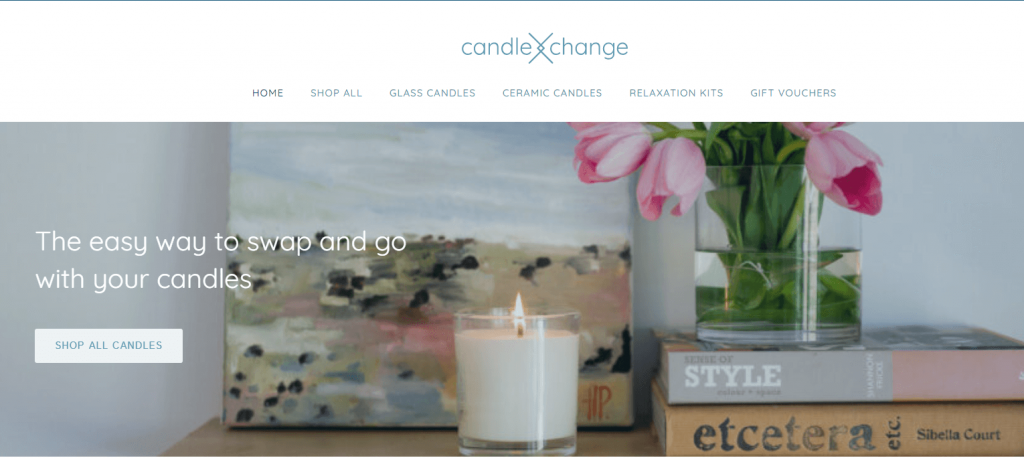
Hayley Clarke: So, candle exchange, as far as we know, is the first in the world swap and go candles. It is literally the same as the soda stream model. You buy a candle, take it home, enjoy it. When you finish, you bring it back or you send it back online, and you swap it on the spot for another candle.
Now, the advantages of that: when you swap over your candles, the next candle you receive is 40% cheaper.
And then overall, the advantage is everything is reused. All of those candle containers are washed and we put them back in production again.
Giles Smith: I love that so much. But then my business management side comes out and then I ask how does that work? Candles are not super high price items. How do you structure it in such a way that it's actually profitable and sustainable for your business?
Karen Platt: Great question Giles. It was an evolution of observing customer behavior, putting some candles in our store, Hayley offering to refill them. The interesting component of this business model and one that we are getting a greater understanding of is the amount of cost that sits in packaging. The opportunity here for us to make this a viable and feasible offer is the fact that as consumers we invest in not only the product, but we what gets wrapped around it. So the advantage is that you buy that container once. The upfront price is actually in the container and the packaging. So, if we can reuse that we can keep the cost down.
The opportunity for us is to scale this. Obviously we have tested that out of our store for the last year and online, and obviously working from home. During COVID, we had a great uplift in sales and we're running all over the place, delivering those to deliver a great experience for our customers.
Organically, it’s already started to move down the wholesale path and there is enough margin in there for us to make that wholesale worthwhile. We see it as critical to making an impact. 4 million candles are sold in Australia every year, and they're largely single use. We want to eliminate that single use nature and for us to do that, we need to scale very fast. So we're going to do that through wholesale stockists.
Giles Smith: Why is normal wax not sustainable? Why have you chosen Soy?

Hayley Clarke: The major wax that was being used was paraffin wax, which is a byproduct of crude oil. Candle distributors use paraffin wax because it burns quicker, it's cheaper, you get more of a cleaner looking candle. So for us, soy was the way to.
Karen Platt: I was just going to say the key message. Just be careful buyng Soy blend, because you don’t know what you’re getting, go 100% Soy.
Giles Smith: Now, you mentioned about packaging and the cost in the candle being in the packaging. I'm assuming you're talking about the primary packaging?
Karen Platt: I mean both. There's the container. We've engraved a glass container, that is the reusable component. Then at the moment, it sits within a recycled box. We want to get rid of that because we don't want to be recycling. And on the way we have some beautiful jute bags that are being made out of Bangladesh, by an Australian social enterprise Earth Worthy.
And then what sits outside of that unfortunately needs to be recycled products. So we don't use any plastics. We're using hex packaging and we're trying to educate our customers that if your box turns up and it's not a pretty white box. It's, probably being reused along the way.
Giles Smith: Something that I'm a little bit confused about now is, obviously you want to get scale with wholesale, but how do you make that circular?
Karen Platt: So it's very similar to the retail model. The idea is that you can go to any stockist and exchange your candle. That stocker then holds that empty container, and when they order the next round they get that candle 40% cheaper. So it's exactly the same.
I suppose the biggest challenge we have is that the reversal logistics wholesale model is quite a new model for a lot of organizations. Our big focus is Metro growth. We are looking to partner with other like-minded business that can handle the reverse logistics aspect.
For example, we're trialling it out at the moment in hairdressing salon salons because female customers return every 4, 6, 8 weeks. The benefit to the wholesaler is that the customer has another reason to return back to their store.
Giles Smith: What's next for candle exchange?
Hayley Clarke: We are looking to expand the physical range, but also the distribution of candles across new south Wales and then into other states, which is very exciting. We are launching a new product, which is the diffusers. So once again, there's the opportunity for the direct swap and go of that glass container.
Karen Platt: I'd just love to share with your listeners about our upcycle program. Only 30% of glass that goes into recycling bin is actually recycled.
Many candle containers are frosted or heat treated and are unable to be recycled. So we'll accept those, fill them, and then we donate them to a number of organizations supporting domestic violence survivors moving into new homes, or settling refugees.
I'm really excited about the growth of that as well, because if our mission is to remove, the landfill associated with the 4 million candles used in Australia every year, we've got another mechanism to do that.

Hayley Clarke: I think there's an important point to make that single use plastics is a huge, massive, extraordinary mountain to climb. And it's an area that needs to be completely focused on. I think people also need to understand that glass, even though it doesn't have as much of the challenges, there are still issues in regards to making sure we're not creating landfill.
At the moment in Australia and all around the world, only 36% of the glass that ends up in landfill is actually being recycled. At the moment it is not cost effective for companies using glass to buy recycled glass over new glass.
Giles Smith: Such an important point. What you guys are doing is, in creating a circular business model is the way that we can get ourselves out of the problem that we have of stuff just ending up in landfill. It's about all the things that we are producing, we need ways to keep reusing the things that we've already created.
Hayley Clarke: You've got to take yourself away from the actual material and the resource, and look at how you design products now in a way that is circular.
Giles Smith: Thank you so much for joining me. Where can people get involved with your candle exchange?
Karen Platt: First port of call is our website https://candlexchange.com.au. Follow us on Instagram as well. Our flagship store is at Balgowlah on the Northern beaches. We also have stockists, all over Sydney and up in Newcastle. If someone wants to become a stockists, please reach out on email at hello@candlexchange.com.au.
Top 3 Takeouts
- Firstly, I just want to touch on what Hayley was describing about their experience as a young brand in the Fashion space. The whole industry structure makes it incredibly difficult to leverage wholesale and stockists, without a heap of capital, and almost impossible to break away from waste and the expectations of fast fashion.A LOT of bagging and flaming goes on regards fashion labels for unsustainable practices, and rightly so, but these kinds of entrenched industry structures are hard to change, and so if you’re pursuing the sustainable fashion track, focusing on DTC is probably your best bet for success, both financially and without challenging your values to breaking point.
- Secondly, and as we’ve discussed before on the show, recycling has real issues. Baking in circularity into your ecommerce business model is not only alleviates some of the issues of recycling, but it’s also a powerful glue that has the potential to be a game changer for increasing your rate of returning customers. And, as a bonus selling point for finding retail partners, as Karen pointed out, a great conversation point in increasing the stickiness and ‘reason to return’ for their customers too.
- Lastly, there’s this important discussion of whether consumers are willing to pay more for sustainable products. Research says no or at least that less than 1/3 say they are willing to pay more.
That research was mostly conducted before the pandemic and certainly before the world’s current focus on rising interest rates, inflation and looming recession, not to mention that sustainability is setting in as an expectation rather than an exception for many people.
We’ve seen two business models today – a fashion label where the cost of goods for sustainable fabrics is simply higher than synthetics and therefore the end garment price is needfully higher, and one where clever thinking around re-use and diminishing the necessity for packaging materially reduces the cost, but where much of the margin may be taken up to cover reverse logistics.
Regardless, if your brand is to thrive, pricing is of key importance, and to make that stick, you need to be able to tell the value story of your product and how purchasing it will help the environment.
To help you with that, I’m running an online masterclass for sustainable brands on June 23rd. We’re going to be going into the nuts & bolts of how to tell your story in order to attract more customers, and enrol them into being a loyal advocate for both your brand and your mission. Registration is free.
Register Now for the Sustainable Brand Marketing Masterclass





